Floor in the hallway: choose the floor

An entrance hall is a visiting card of any home. By its setting, one can understand a lot about the owners of the house, learn their taste and well-being. Therefore, this room should be comfortable and aesthetically pleasing. An important factor in the interior composition is the floor covering: it requires increased attention, since it is exposed to negative factors every day. Choosing a floor covering for the hallway.

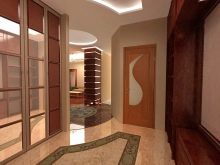
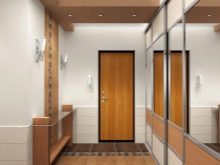
Features of the room
The entrance hall is a special room that differs from others in its high traffic. This is where the floor requires frequent cleaning, it needs to be washed, wiped, removing daily dirt. If it is snowing or raining outside, the load on the floor increases. The specificity of the premises is such that it is a kind of passageway.
Therefore, it is extremely important that all pollution from the street cannot go outside the room. And here a lot depends on the floor: if the coating is bad, dirt can move to the shelves with shoes, along with raindrops fall on the walls.
Renovation of the hallway is done last, when the main rooms are ready. This saves the premises from unnecessary dust and dirt. However, if major changes are planned that require the removal of the old covering (for example, tiles), you will have to either cover other rooms with polyethylene, or remove the tiles at the same time as finishing other rooms. On the one hand, it may seem inconvenient, on the other hand, it will save you from unnecessary cleaning.
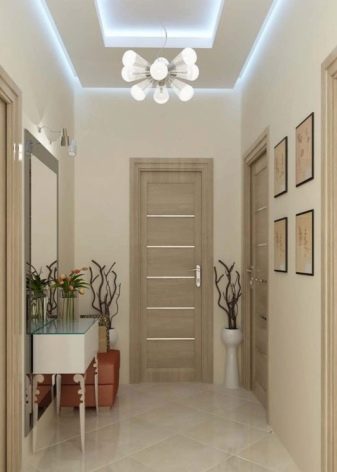
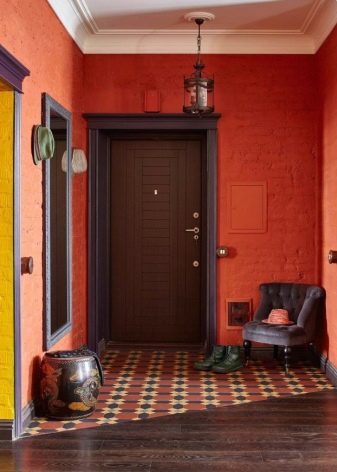
Taking into account the peculiarities of the room and the material, it is important not to forget: when choosing a coating, you should adhere to practicality and do not forget about lighting. The entrance hall rarely has windows through which it is filled with natural light. In most cases, it is illuminated by artificial light sources. It is imperative that the floor covering does not obscure the intensity of the glow. Therefore, the shade is one of the important factors.
The color palette of different materials allows for different options. There is no need to make the floor gloomy: there are many varieties of woody tones from light to rich. Moreover, you can use a tricky technique by choosing a heterogeneous texture with a color transition.
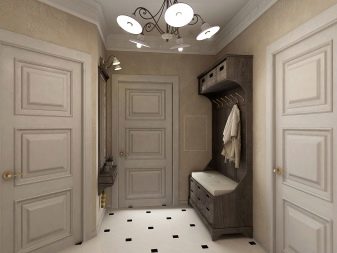
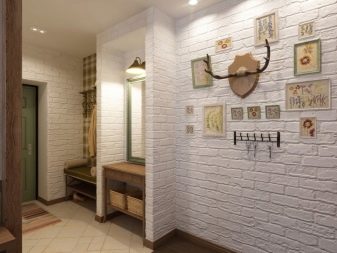
Floor coverings: pros and cons
Due to the wide variety of materials on the construction market, it will not be difficult to choose a floor finish option. However, everyone has their own preferences. I would like the cladding to be flawless and reliable, while it is important that the option is budgetary, but durable. To understand what kind of material is needed, it is important to know the strengths and weaknesses of each.
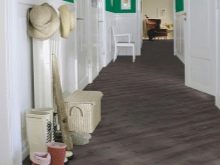
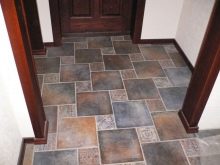

In the large list of flooring materials, several varieties can be distinguished that are in special demand. These include:
- parquet;
- parquet board;
- laminate;
- tile;
- porcelain stoneware;
- linoleum;
- self-leveling floor.

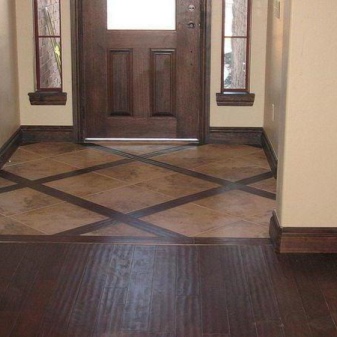
Parquet
Parquet is a piece of wood-based boards laid in a specific pattern. Bars are produced mainly in the form of rectangular stripes, although, if the design suggests, they can be triangular, square or with a pattern, which, together with other fragments, make up a certain composition. Parquet is laid on a flat surface using a special mastic.
Such a coating is durable, however, it absolutely does not tolerate prolonged contact with water, it is erased under the influence of an abrasive and needs constant varnishing of the surface.
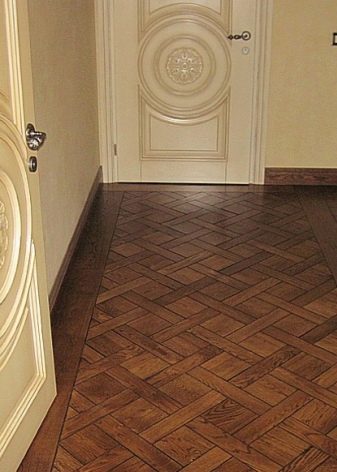
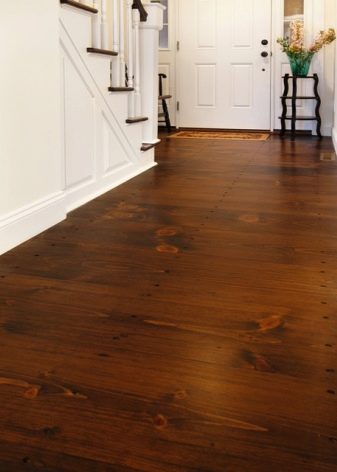
Parquet board is an analogue of piece blocks made of wood (oak, beech, birch, ash). Consists of three layers: the lower shock-absorbing from budget wood species (mainly coniferous), the middle stabilization layer and the upper one from more expensive and valuable varieties of wood. Laying is carried out like a laminate, using special locking joints.
When choosing, it is important to keep in mind that the wood species must be dense.
The parquet board looks beautiful, allows painting with varnish, however, this coating is susceptible to dirt, it is afraid of water and household chemicals.
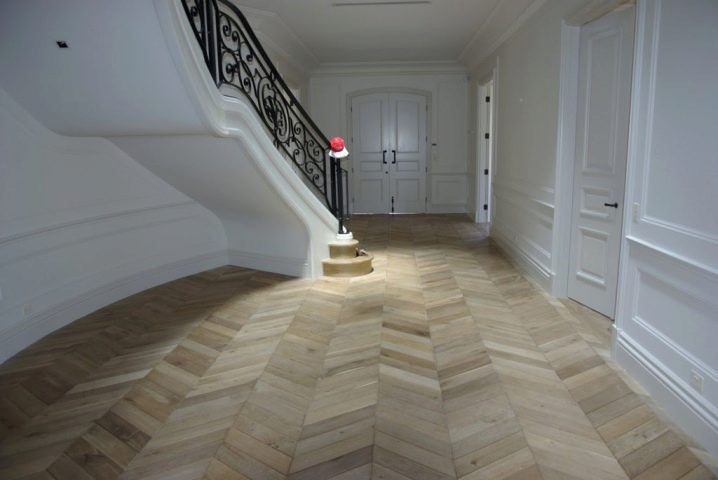
Laminate
Finishing of this type is a multi-layer coating, at the base of which high-density fiberboard boards are used. The middle (decorative) layer consists of strong paper, the upper one is protective. Laminate is an expensive type of flooring that is classified and suitable for use in residential and industrial environments. It can be household and commercial.
The installation of the material is carried out on a leveling and noise-insulating substrate. This coating provides for local repair, adapts to any surface of natural wood and stone materials, leather, metal, it is quite easy to install, strong, stable under heavy weight loads, resistant to water and dirt.
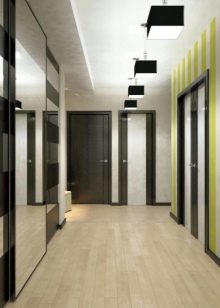
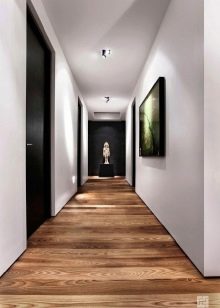
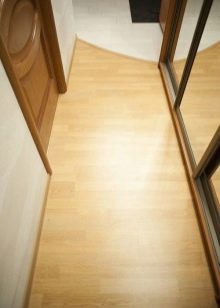
Tile
Ceramic tiles are a product of high temperature clay processing. It differs in different shapes, sizes, thicknesses and colors. For the floor, a more durable and thicker tile material is used, since it is this material that corresponds to the technical characteristics of the floor covering.
This raw material is an excellent option for floor cladding. The tile is durable, looks beautiful, easy to clean, and has high wear resistance. However, with a lot of advantages, it makes the floor surface cold, and sometimes sliding.
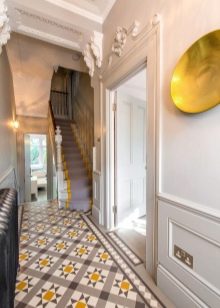
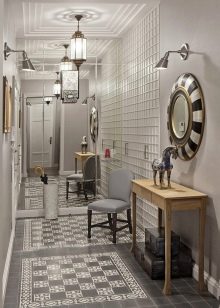
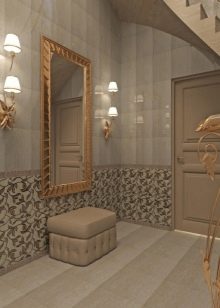
Porcelain stoneware is an improved alternative to ceramic tiles, which, in addition to molding, is subjected to high pressure pressing. Outwardly, these are fragments of a square or rectangular shape, which, like the tiles, are glued by means of tile glue to the leveled surface of the concrete floor. Porcelain stoneware is more expensive than its counterpart, it is practical, resistant to household detergents, does not absorb moisture, and is hygienic.
However, an experienced master needs to lay it: not everyone can put the fragments on the floor exactly. In addition, the material is expensive, so it is rarely used.
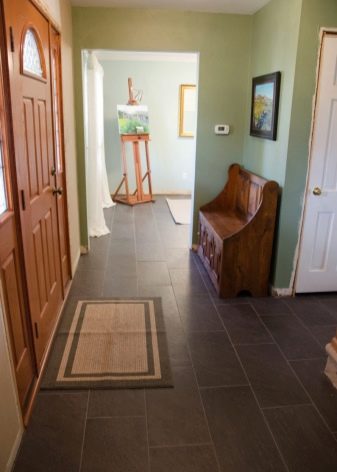
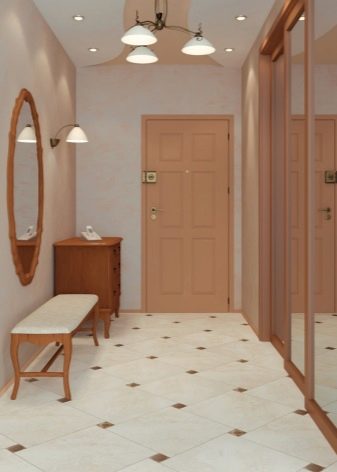
Linoleum
This finish is a budget alternative to laminate and parquet, although its properties are sometimes even better than them. It is divided into two types: roll and fragmentary. Raw materials are classified in three classes (household, semi-commercial and commercial), differing in the thickness of the protective layer and the variability of the width.
It can be laid with a large sheet without joints, using in the flooring of the hallway and corridor. Linoleum is easy to install, so you can lay it with your own hands without involving a specialist.
Tiled linoleum resembles linoleum tiles, which are glued like ceramics.

Bulk
Self-leveling floor is a monolithic topcoat without joints, which is a liquid material made of polyurethane or epoxy resins, mineral fillers and decorative additives. It hardens within an hour after application to the surface and is up to 5 mm wide. Such a coating is durable, environmentally friendly, fireproof, completely sealed and resistant to repeated cleaning. The technology allows you to create a beautiful 3D drawing with a three-dimensional image. The disadvantage of raw materials is the high cost and the need for perfect floor leveling.
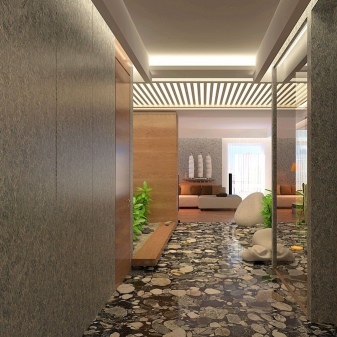
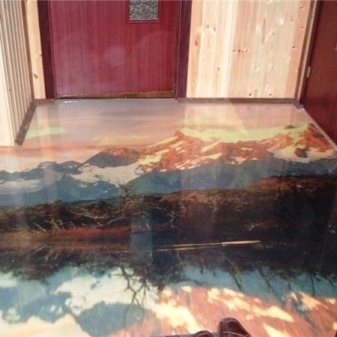
Combined
The combination of materials helps to relieve boredom of the flooring.Due to the large assortment of raw materials of different texture and thickness, it can be appropriately combined with each other. The techniques are different: it can be a coating of one type of modules or a mix of different raw materials, reception of contrast or different textures.

You can combine no more than two or three different facing materials, joining them with a sill or tightly stacking end-to-end, for example:
- laminate and linoleum;
- laminate and linoleum tiles;
- artificial stone and laminate;
- ceramic tiles and linoleum;
- natural stone and parquet.
You can zone sections of the door and corridor, beat the poor durability of coatings by replacing them in certain areas.
This is easy to do: many materials are easy to cut into the desired shape.
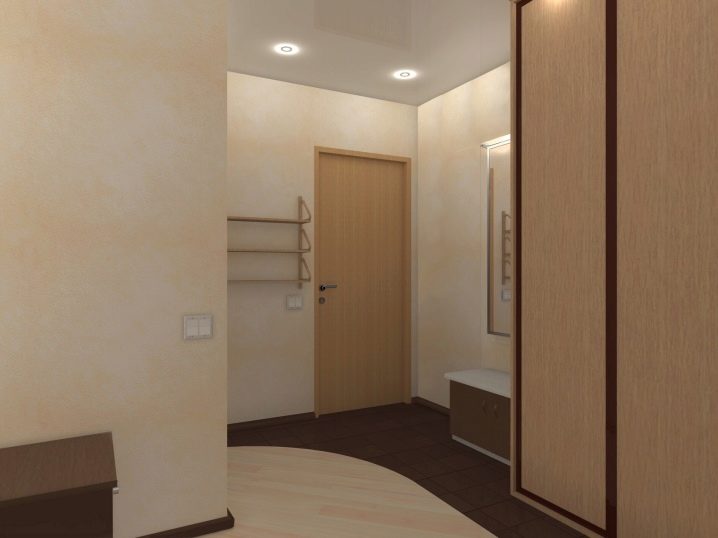
Warm floor
The "warm floor" system is a method of floor insulation using several technologies. These include electrical cable, carbon rod, resilient infrared and water systems.
There is a relationship between the choice of flooring and a given system. The choice of flooring depends on the method of floor insulation. The main ones are linoleum, parquet, laminate, tiles, as well as coatings based on polymers and vinyl.
In addition to them, carpet is combined with the "warm floor" system.
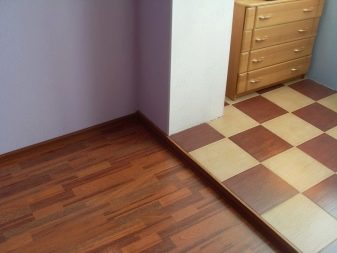
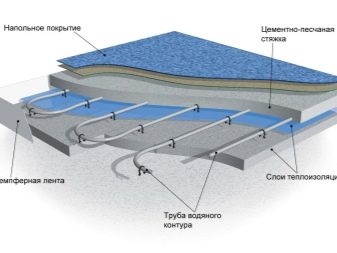
This insulation has its own nuances: the coatings must be chosen in terms of strength, external characteristics, the complexity of laying and the level of thermal conductivity. For example, ceramic tiles would be a good solution: when heated, they will give off heat to the room.
- Laminate more suitable for a water-heated floor: due to thermal resistance, it will not deform when heated.
- With a water heating system, you can install linoleum: it will evenly distribute warm air around the entire perimeter of the hallway.
- Parquet board not suitable for the water system, as it quickly loses its shape.

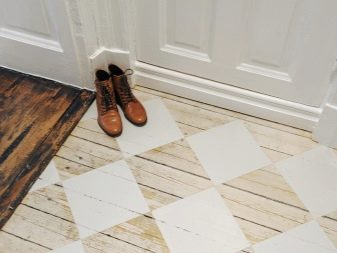
What else to cover?
In addition to the basic materials, the floor can be covered carpet... In fact, it is an alternative to carpets, has a pile structure, perfectly absorbs noise and provides the floor with warmth. However, this finish is not practical. The floor in the hallway is cleaned daily, which cannot be done with carpet. Given the fact that the coating is laid over the entire area, the canvas cannot be shaken out, removed or washed.
An alternative to carpet are track... They are rectangular carpets, differ in a shorter pile length, sometimes do not have it at all (lint-free options) and can be located anywhere in the hallway, decorating an apartment. These are additions to the flooring. Unlike carpet, they are easy to clean, have bright colors and protect the surface of the finish from abrasion.


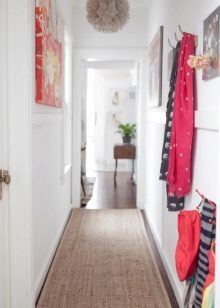
Colors and shapes
The color palette of the flooring is varied and depends on the style of the room, the degree of its illumination, the total area, and the number of interior items. In addition, the taste of the owners of the house is a decisive factor. Some believe that the color should certainly be dark, others are sure of the opposite, assuring that aesthetics are important.
As a result, the choice of the first is classic (dark color, decoration in the form of boards, squares of marble or tile mosaic), the preferences of others are bold ideas (combinations of black and white, light colors combined with dark contrast: original panels, arches, semi-arches, curly cutouts and waves).
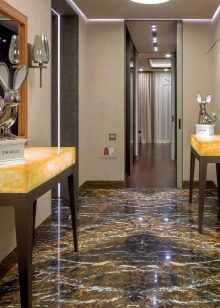
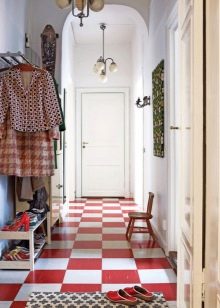

The most popular shades of flooring are tones of beige and brown, as well as the color of brick, marble, stone, neutral paints (light gray, diluted black). The design takes into account the naturalness of color: this is how the flooring looks solid, without interrupting the general idea of the style. You can choose other paints, this is appropriate in the case of a self-leveling floor, linoleum mosaic.
It is better to pay attention to the texture: it can be the effect of aging, rough wood, embossed stone.
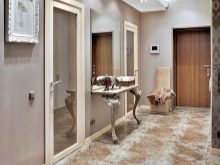
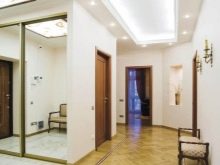
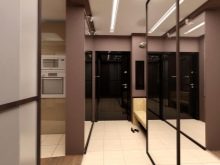
Criterias of choice
Having understood what the main types of finishes are, it remains to determine which one is better. There is no hard answer to this question: everyone chooses what suits his taste and budget. Hallway flooring is different from other types of flooring. It must meet the stated specific requirements.
It is important that it be:
- resistant to abrasion, characterized by resistance to increased exposure to abrasives;
- moisture resistant, does not violate its structure during daily wet cleaning;
- possessing chemical inertness, providing for cleaning the surface with various chemical preparations without destroying the structure;
- dirt-repellent, facilitating daily cleaning;
- especially durable, resistant to mechanical damage of various
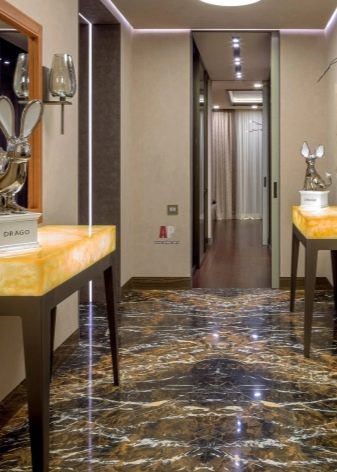

- environmentally friendly, does not emit harmful substances into the air;
- real branded (today there are many fakes that are outwardly difficult to distinguish from the original at the time of purchase);
- aesthetically pleasing, able to successfully fit into the environment;
- affordable, while not losing quality characteristics;
- easy and convenient to install, which does not impede installation;
- durable, designed for at least 10 - 15 years without the need for adjustment.
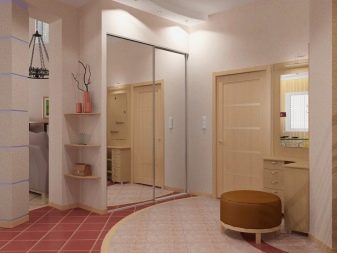
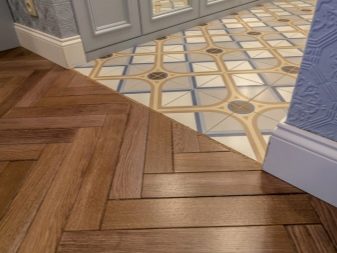
In addition, the design approach is important:
- it is important to follow the principle of a single composition: the floor covering can repeat the multi-tiered ceiling;
- floor decoration can be supported with interior items in color, pattern or texture;
- the combination can provide for the zoning of the hallway into areas with varying degrees of traffic;
- in the area of greatest load, it is worth using a more resistant material of a practical color;
- you can use a patterned coating: so stains that are difficult to remove will be less noticeable;
- it is important to exclude white from the list: even with intensive cleaning, it will turn yellow over time.
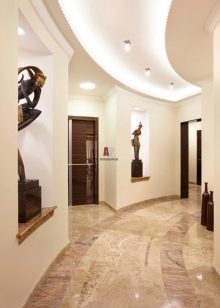

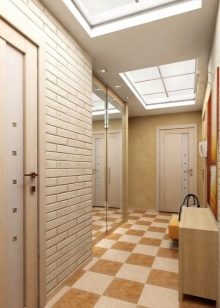
Having decided on the type of raw materials, the complexity of styling and insulation, it is important to make a purchase in a trusted store. This will allow you to invest in a quality product that will stay on the floor for a long time.
Before buying, you can flip through reviews of real buyers about this finish, preferably on construction forums: the opinions of experts will give valuable information about the intricacies of the work, saving time for facing.
The calculation of the material is important so that the laying has a minimum of joints. In addition, you can use design examples to bring home comfort and special style to the atmosphere of the hallway.
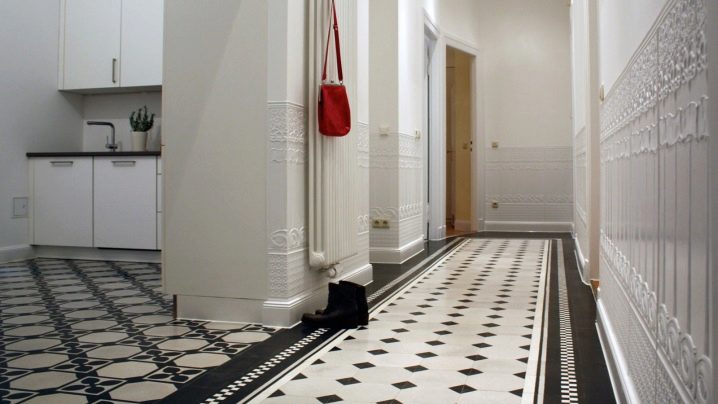
You will learn more about how to decide on the floor covering in the hallway in the following video.













The comment was sent successfully.